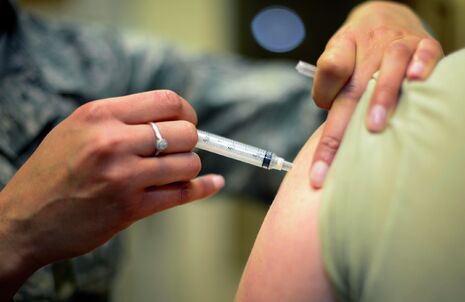Vaccines: the ultimate panacea?
Sofia Weiss investigates how innovations in vaccinology are changing the way we deal with infectious disease

Vaccines are among the most effective interventions in modern medicine’s arsenal. Ever since Edward Jenner’s ingenious inoculation against smallpox in 1796, their use has become indispensable to the eradication of disease; indeed, this same disease that claimed over 375 million lives in the 19th century alone has, after the completion of a successful eradication campaign in 1978, taken no more. Vaccines represent both the least expensive and simplest way to protect against devastating epidemics. Despite such a stellar legacy, many point to the enduring extraordinary toll exacted on humans by infectious diseases as evidence that vaccines have yet to realise their full potential – but perhaps, as new research suggests, not for long.
“Vaccines of the future will need to go beyond mimicking natural immune responses and into the realms of generating unnatural immunity”
Many technologies under development are likely to improve the simplicity and effectiveness of vaccine delivery. To make a vaccine that only needs to be given once, for example, it must either be very powerful, or be packaged in such a way that its contents are released intermittently once it has been administered. Under development are multilayer particle technologies and alternative adjuvants, which have the potential to remove the need for multiple shots. Such a ‘one-shot wonder’ currently shows particular promise in the treatment of HIV, with Beatriz Mothe and her team at the IrsiCaixa AIDS Research Institute utilising their new vaccine-based therapy to leave patients virus-free. Although it is early days, one participant is already approaching 12 months without medication. This is no small accomplishment: the vast majority of those infected with HIV need to take anti-retroviral drugs (ART) every day to thwart replication of the virus and its deleterious consequences to their immune system. Further, these must be prescribed over a lifetime, since the virus’s sly pathology means it can hide away in tissues, quickly re-emerging as soon as ART is halted. In this context, and with her innovation’s current promise, we can only hope that Mothe’s prediction that she’s “on the right path” will prove correct.
Further novel methods of vaccine delivery are also coming to the fore in 2017 – some exquisitely quirky. Debra Kristensen at PATH focusses on such developments. Her latest project is intended to treat pathogens that enter the body via the mucosa, the mucous tissue lining the nose and mouth as well as reproductive and gastrointestinal tracts, which have historically proven a challenge to target with vaccines. Oral drops are the easiest alternative to administer, but many vaccines are compromised by stomach acids. Utilising lateral thinking, her unique formulation may solve this problem. Called a sublingual gel, it begins as a liquid solution, but when dropped under the tongue, it turns into a gel. The vaccine is easily absorbed by the thin tissue under the tongue, and because it’s a gel, it won’t be swallowed. Now in the testing phase, it could potentially help to prevent and treat pathologies from diarrhoeal diseases to polio.
Jenner created the successful smallpox vaccine by building on an observation of nature: milkmaids who were exposed to cowpox were resistant to smallpox. Vaccines of the future, like those outlined above, will need to go beyond mimicking natural immune responses and into the realms of generating unnatural immunity. Advances in the medical and biotechnological matrix, if well-matched by the collective effort of governments to ensure their accessibility, will almost certainly lead to unprecedented success in preventing disease and preserving public health by alleviating death and suffering from numerous microbial threats. Vaccinology may just be about to enter its second golden age
 Comment / Plastic pubs: the problem with Cambridge alehouses 5 January 2026
Comment / Plastic pubs: the problem with Cambridge alehouses 5 January 2026 News / New movement ‘Cambridge is Chopped’ launched to fight against hate crime7 January 2026
News / New movement ‘Cambridge is Chopped’ launched to fight against hate crime7 January 2026 News / Uni-linked firms rank among Cambridgeshire’s largest7 January 2026
News / Uni-linked firms rank among Cambridgeshire’s largest7 January 2026 News / SU stops offering student discounts8 January 2026
News / SU stops offering student discounts8 January 2026 News / Cambridge businesses concerned infrastructure delays will hurt growth5 January 2026
News / Cambridge businesses concerned infrastructure delays will hurt growth5 January 2026








